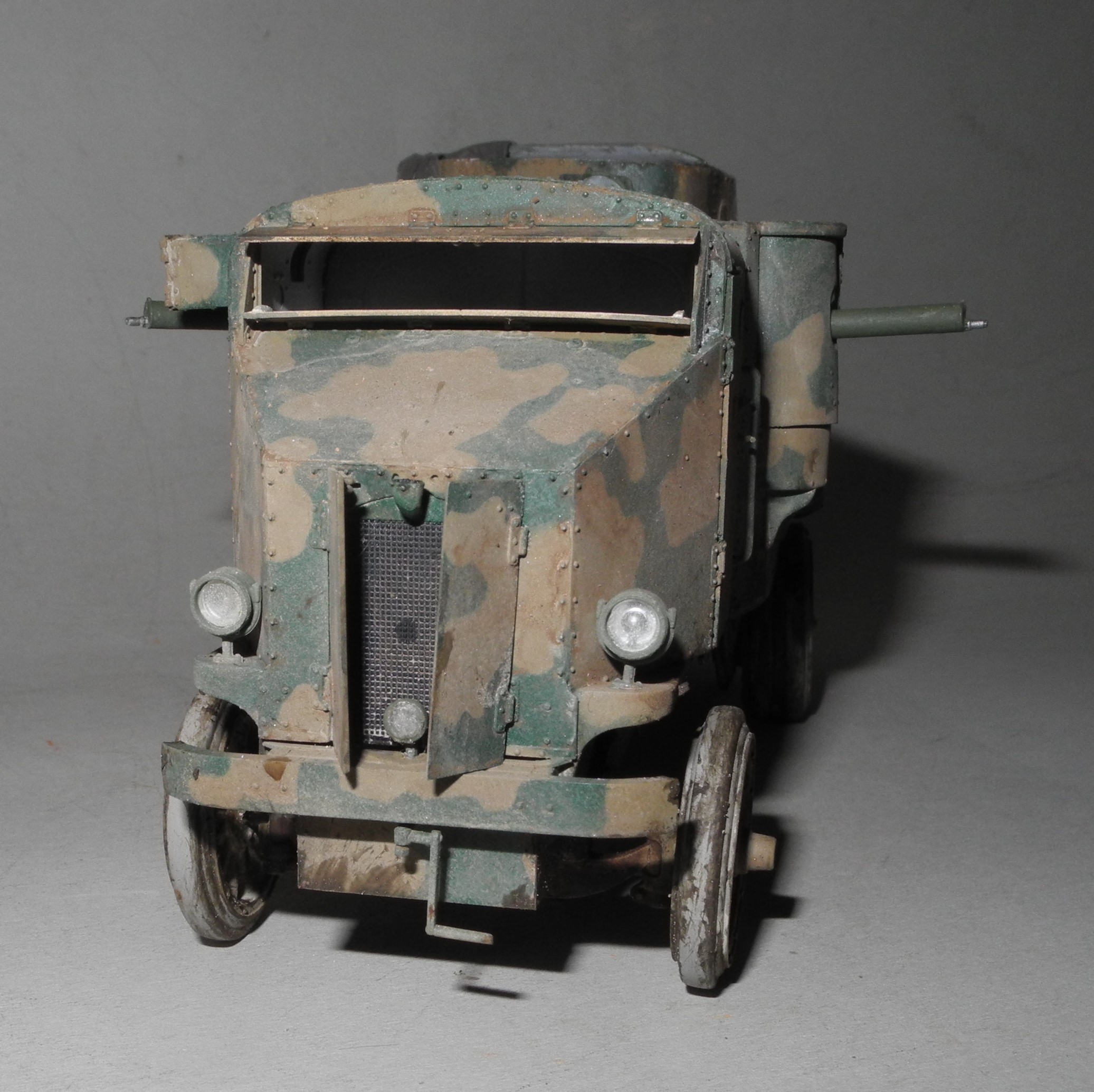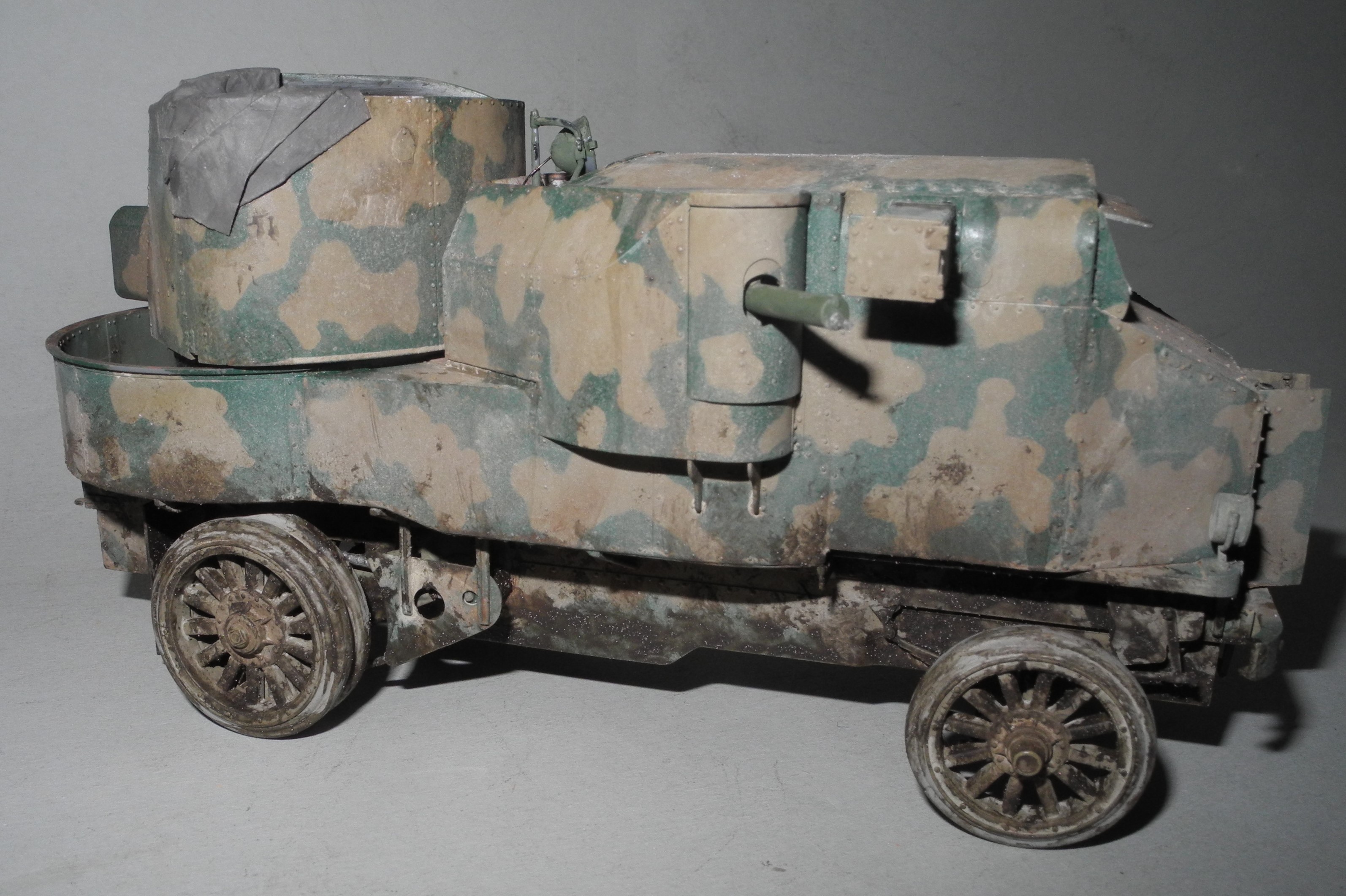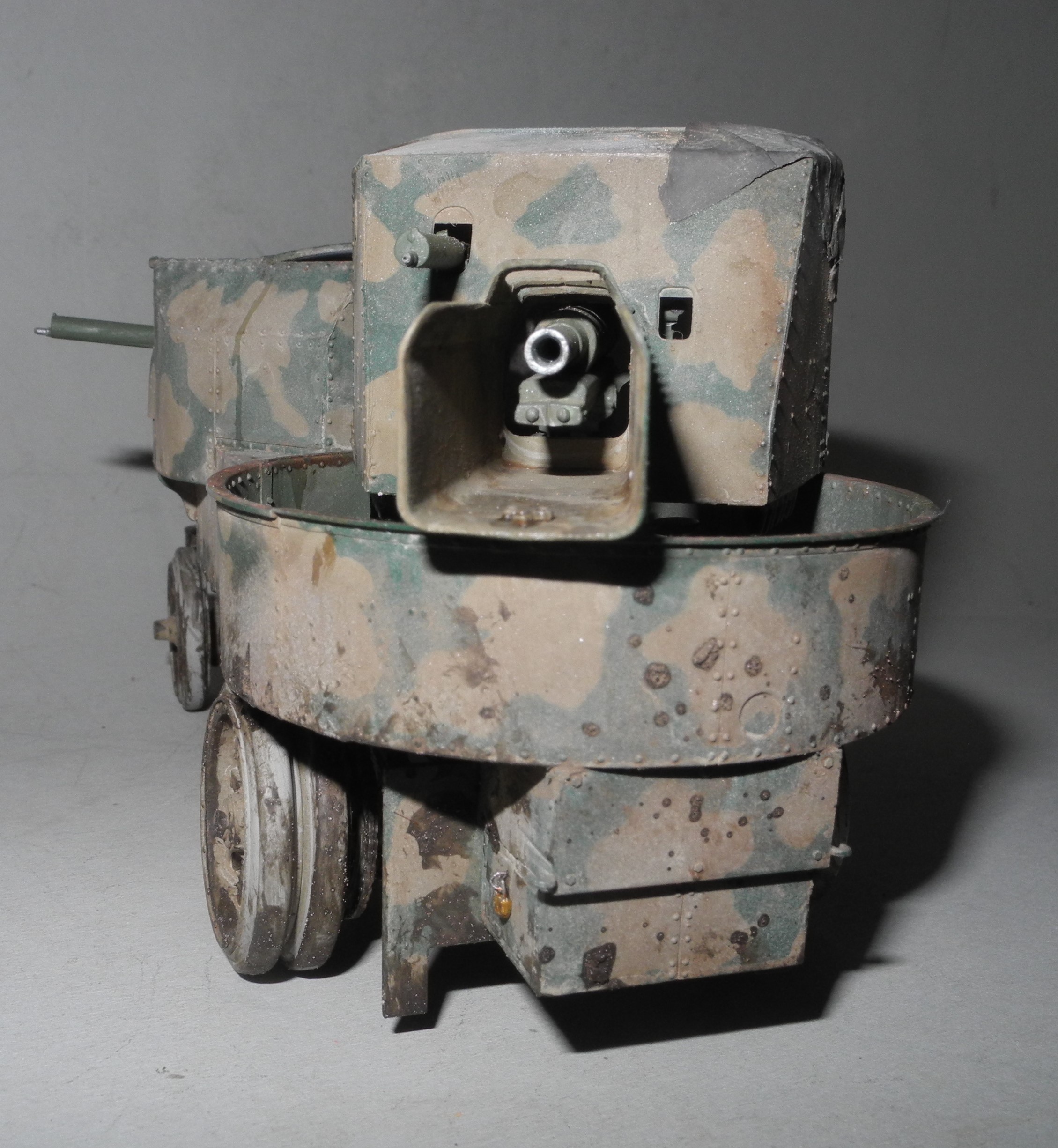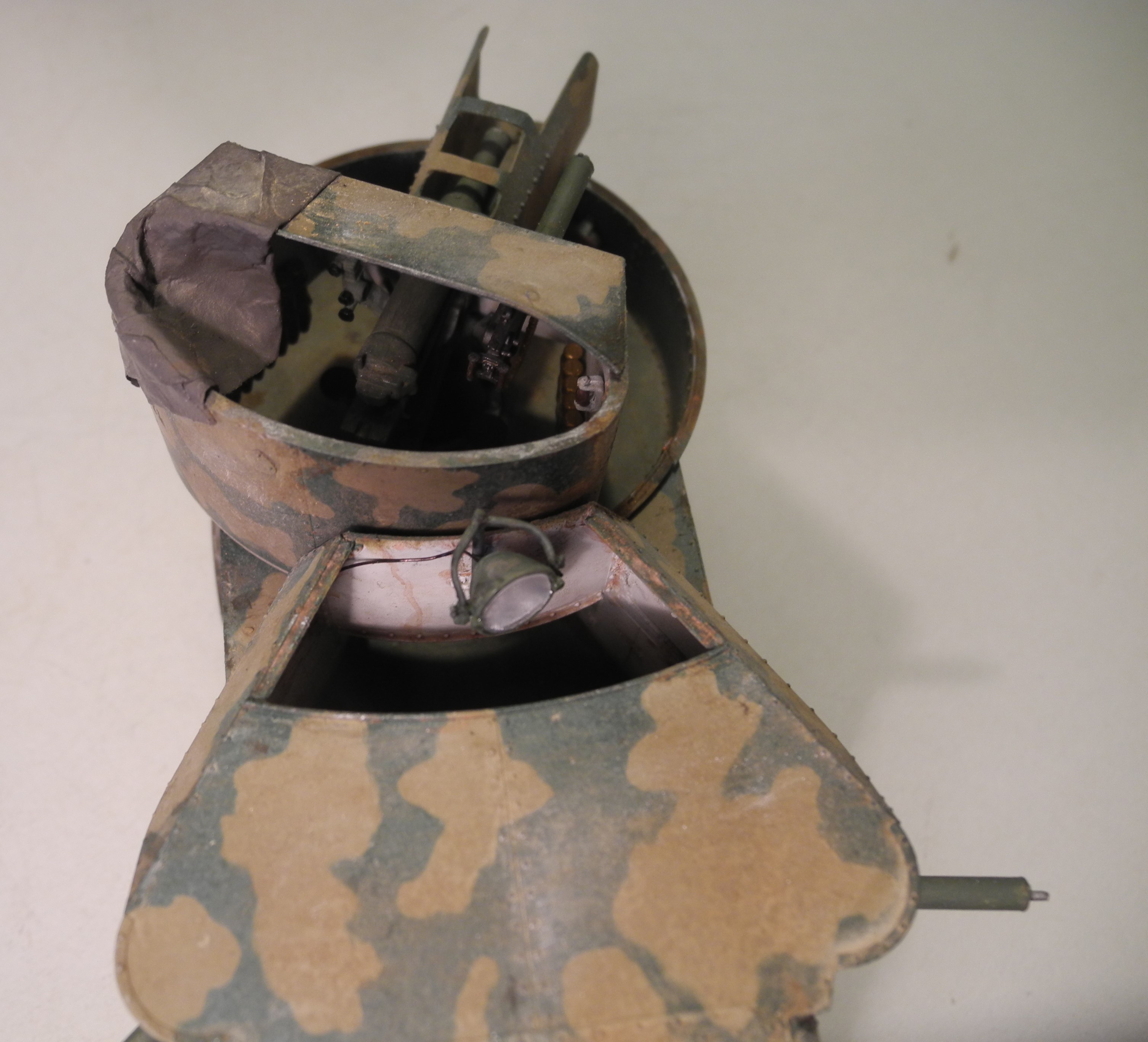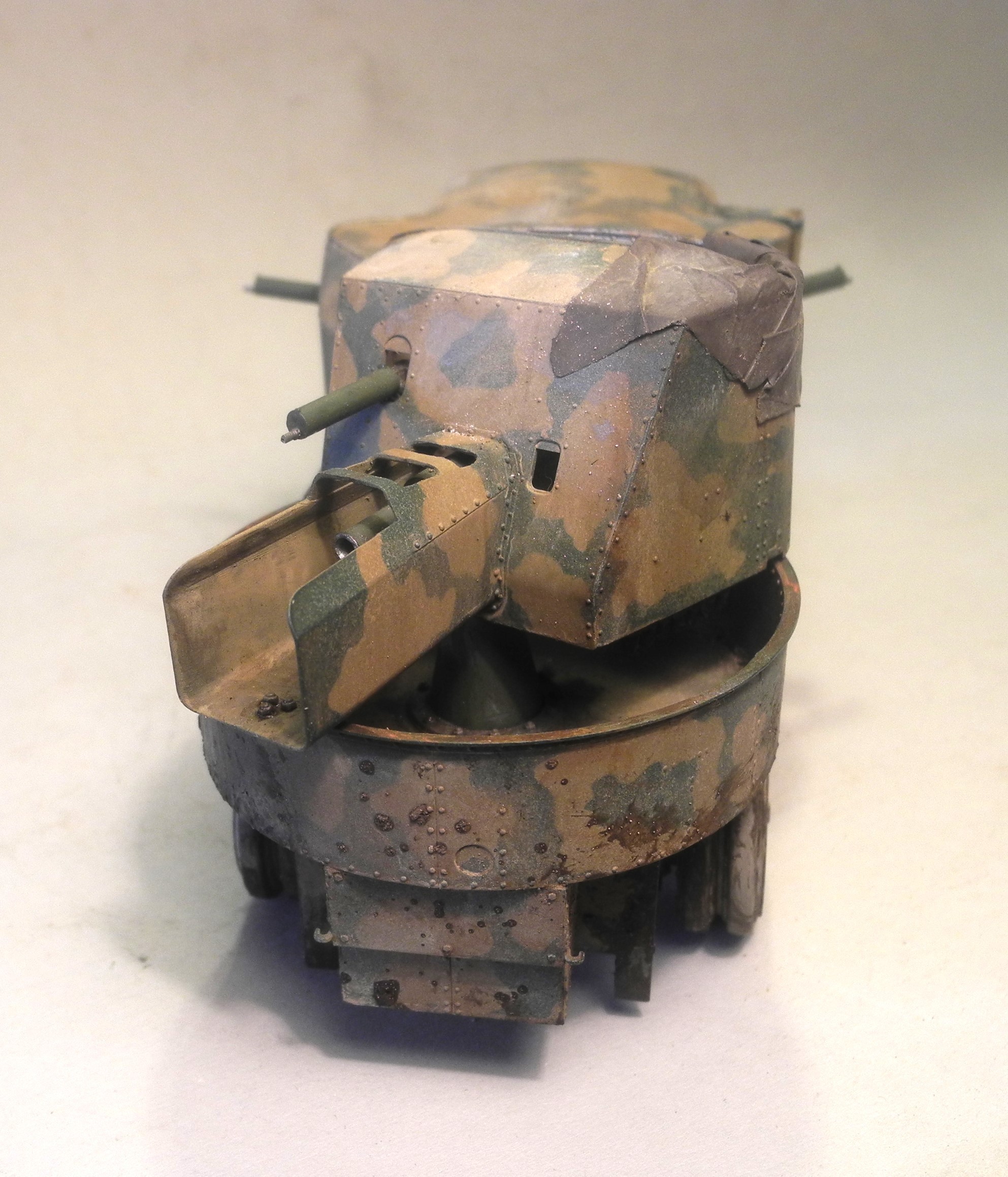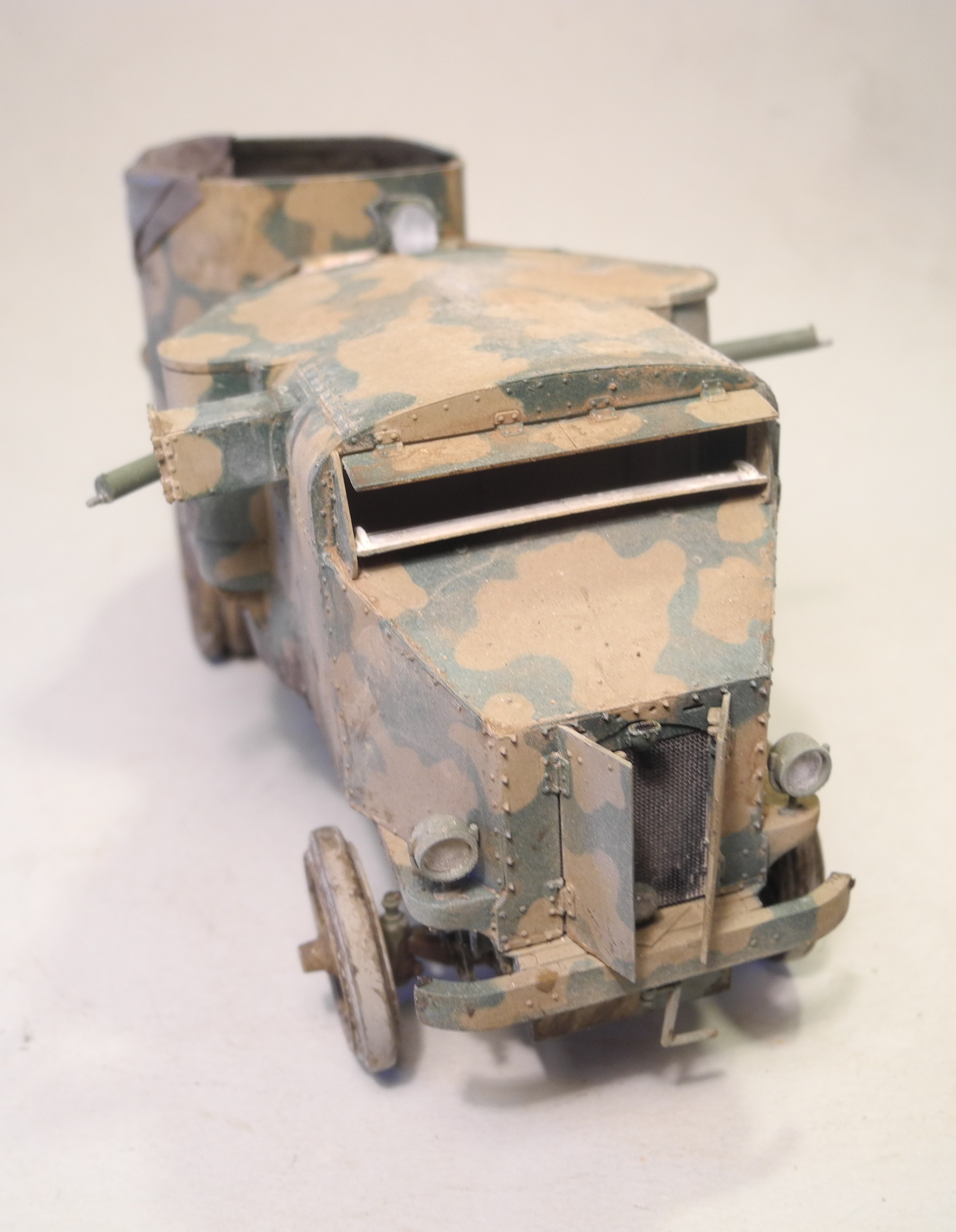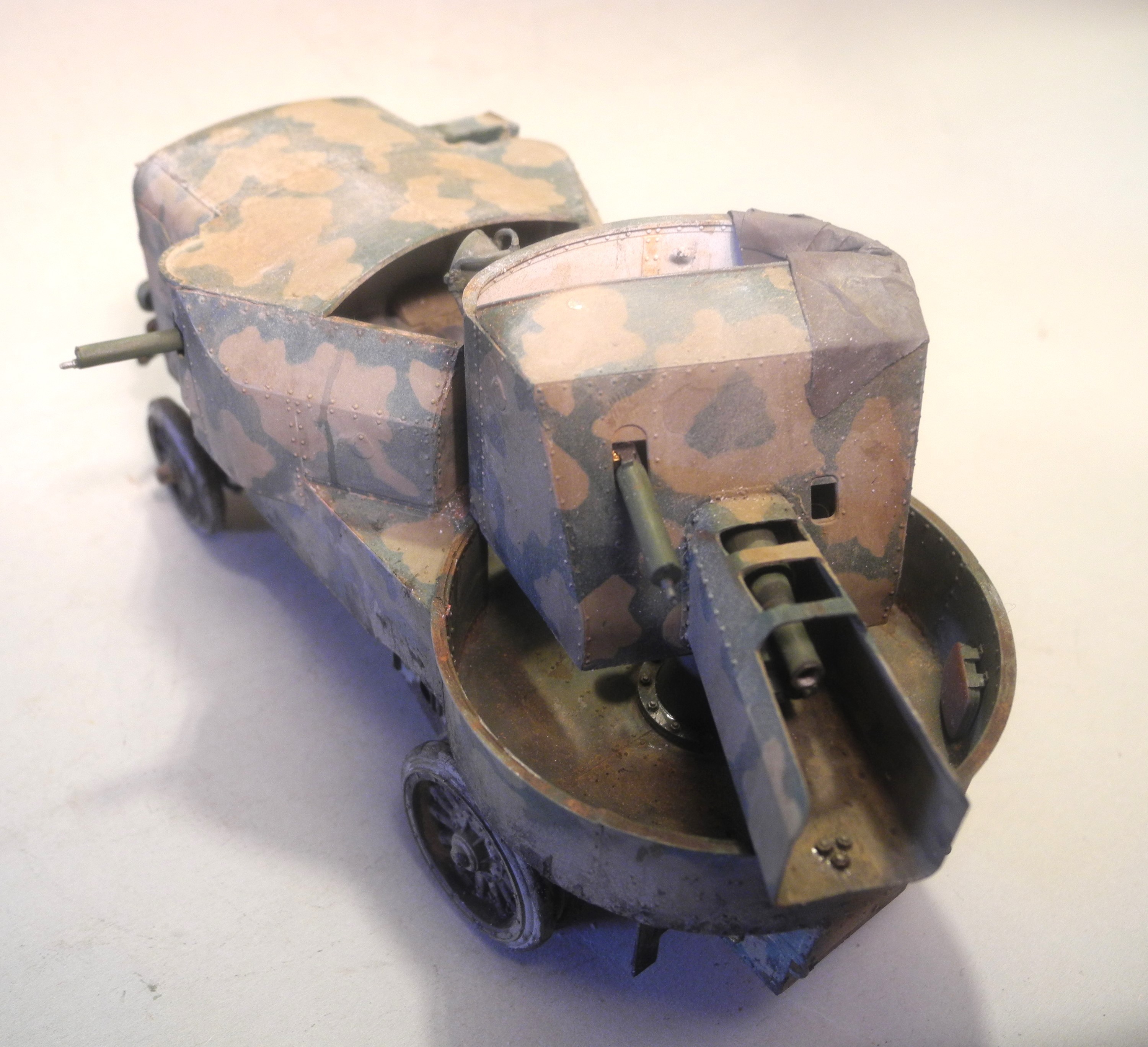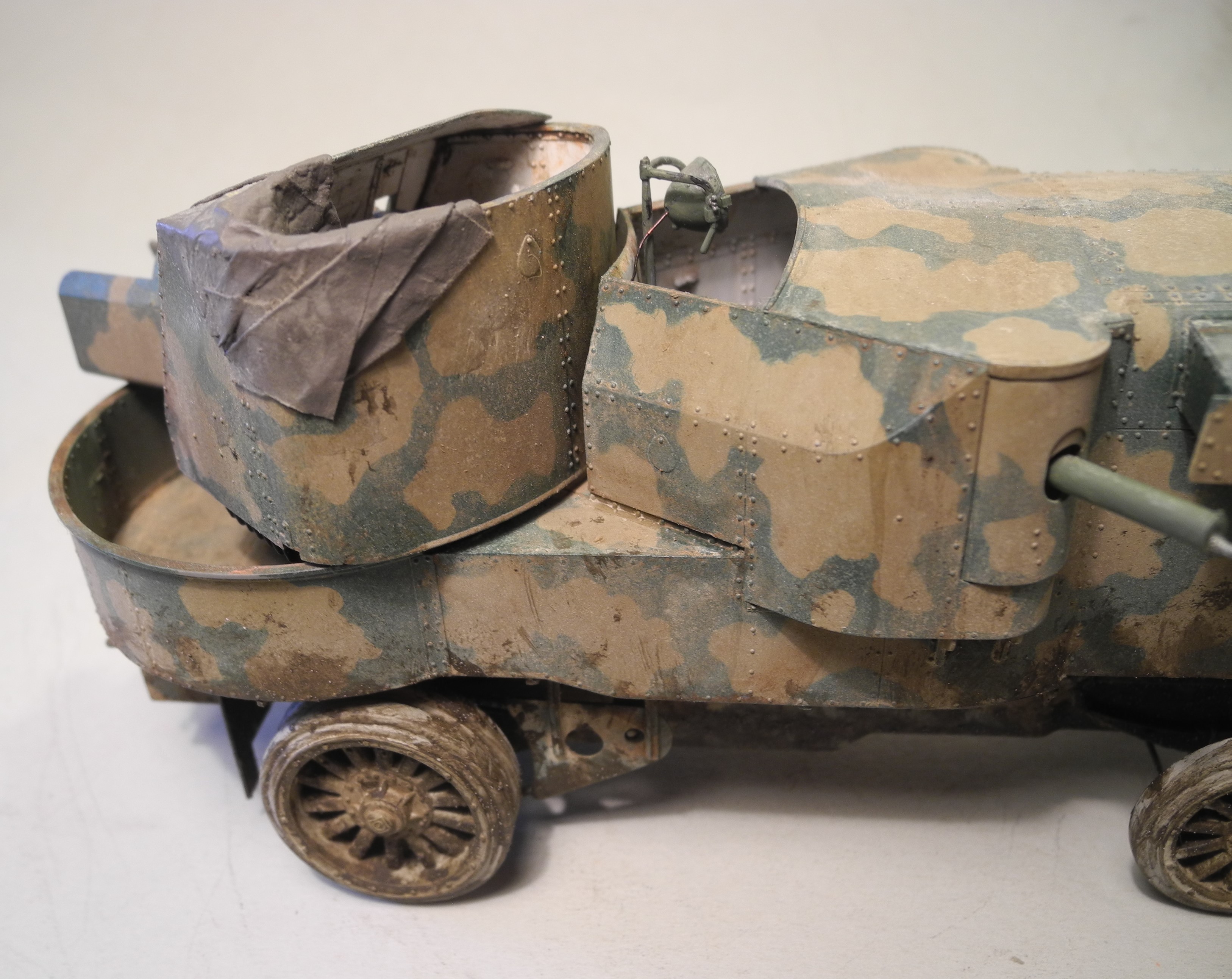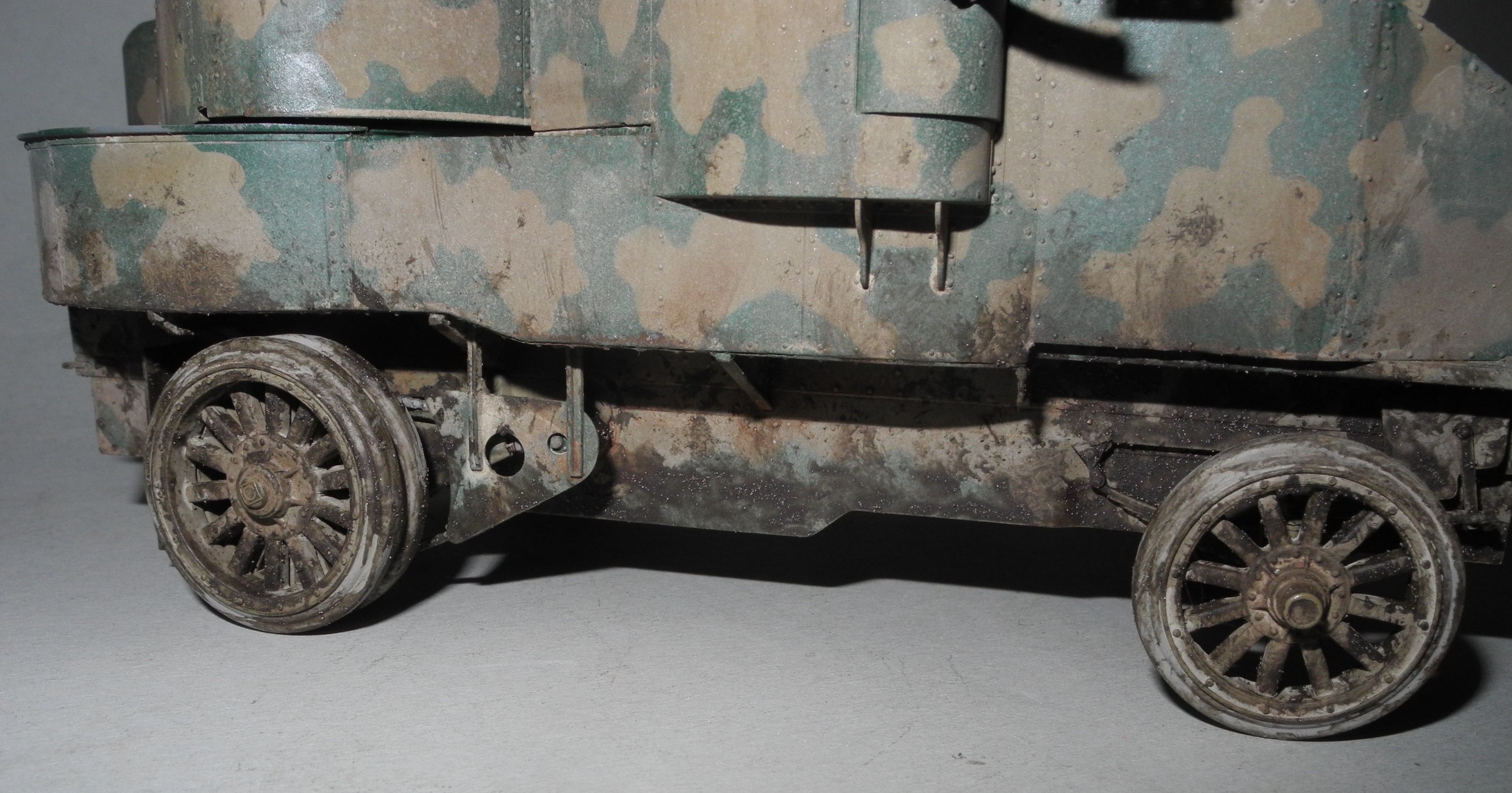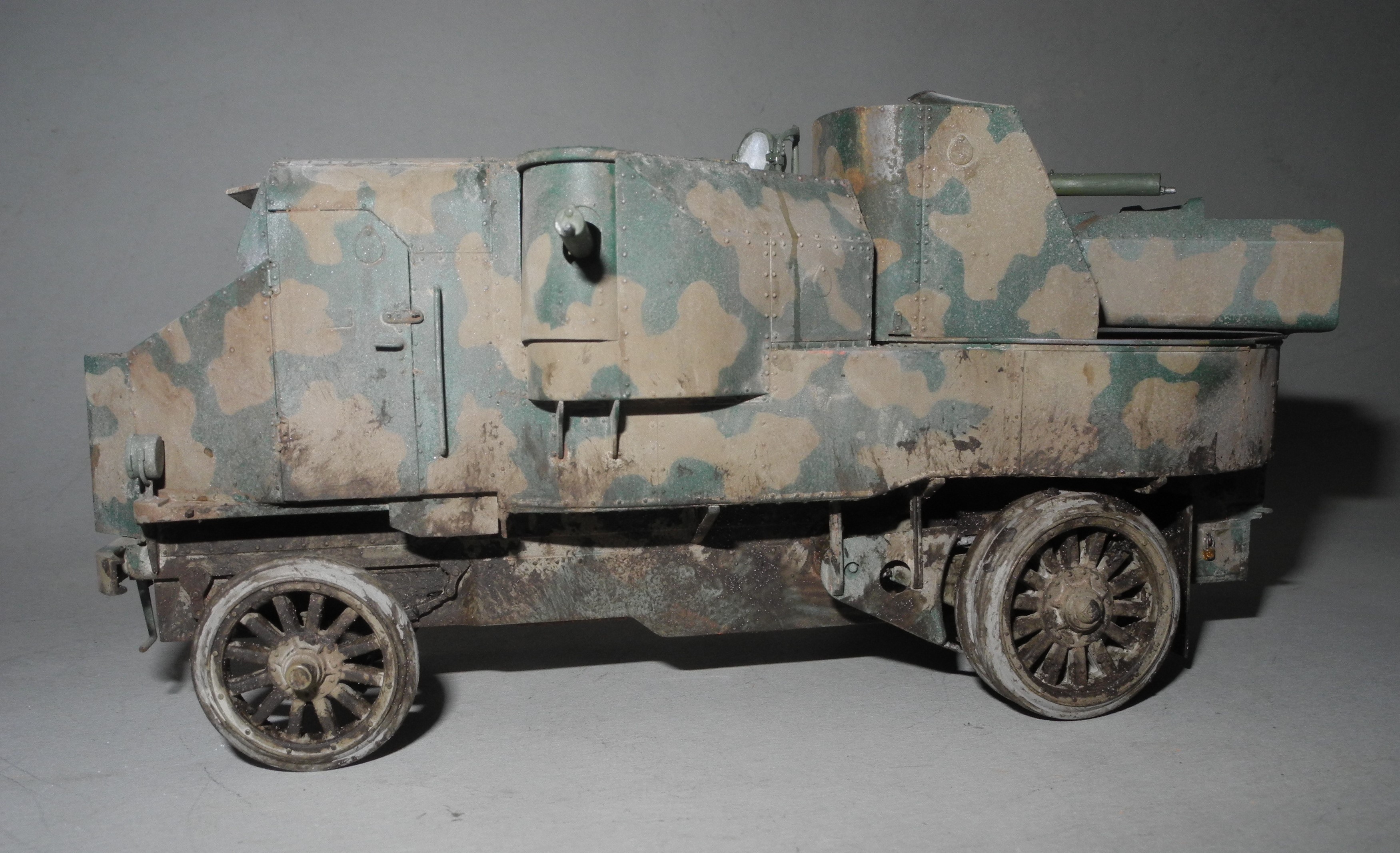Garford-Putilov Armoured Carfrom Copper State Models
Garford-Putilov Armoured Carfrom Copper State Models
This steam-punk looking vehicle were built in Russia on Garford trucks imported from the USA for the Russian Imperial Army. It was the only armoured car equipped with a heavier weapon other than machine guns that was produced in any significant number during WW 1. It started its service in the Russian army and served both sides during the Russian revolution. Several vehicles also served in other countries after being captured, among them Germany, Poland and Latvia. CSM has released three different version of this vehicle, one for the Russian army, one for Freikorps service and one used by the Soviet, Polish, Ukrainian and Latvian armies, which is the model kit used here.
The model is built out of the box with only a few modifications. A storage box for machine gun ammo in the frontal fighting compartment, a cable for the search light on the roof, three bolts on the bottom of the covering for the main gun, a couple of plastic card strips to cover the joining of armoured plates on the inside of the rear fighting compartment and a modified padlock for the tool box at the rear wheel. I encountered no difficulties during the build, but some small amount filling is need here and there.
As I pre-ordered the model, I also got a book covering the history of the vehicle with reference photos. I intended to paint it in the cool but complicated camouflage pattern used by the Latvian army. https://armoredcars-ww-one.blogspot.com/2016/ However, the Garford-Putilov was built on four, five and six-ton chassis, and the Latvian vehicle has a longer chassis than the one from CSM. The Latvian Army also installed another engine that resulted in the box like structure in front of the sloping frontal armour. They also installed armour plates covering the rear-fighting compartment under the gun shield, different muffler and machine guns. To build a representative vehicle would require a lot of scratch building with no reliable references available. So instead, I choose a camouflage pattern from a photo in the book from CSM, although the colours probably is not accurate. Looking at the photos in the book it is sometimes hard to see if the vehicle has some type of camouflage pattern or if it is just wear and tear. Due to the shifting of the vehicles between the different combatants, it was repainted and renamed several times. The driver is located at the right side and the box poking out in front of the machine gun is a mirror device enabling the vehicle to back out of trouble. Later a second driver was installed in the rear-fighting compartment, making it easier to drive backwards. The two drivers could communicate through shouting in a tube connecting the two compartments. High tech of those days.
As usually, CSM offers several extra modifications such as a conversion of the above mentioned rear drive device, interior details, ammo boxes for the machine guns and there are some figures from different armies that can pose with the vehicle. There are blue prints of the vehicle on the net with the roof of the two fighting compartments covered with armour plates and some hatches. This is probably wrong as no such modification is mentioned in the book from CSM or seen in any of the photos. The open top compartments was the only way to get rid of powder gases at that time. A replica of the vehicle was built and used in the Russian TV miniseries White Guard. However, it has frontal doors on both sides that the original does not have.
This was a fun build and weathering of a rather unknown but important vehicle in the development of AFVs. Although poor cross country mobility this armoured car was highly praised by officers due to its firepower enabling it to supress attacks from enemy infantry.
Garfordf


